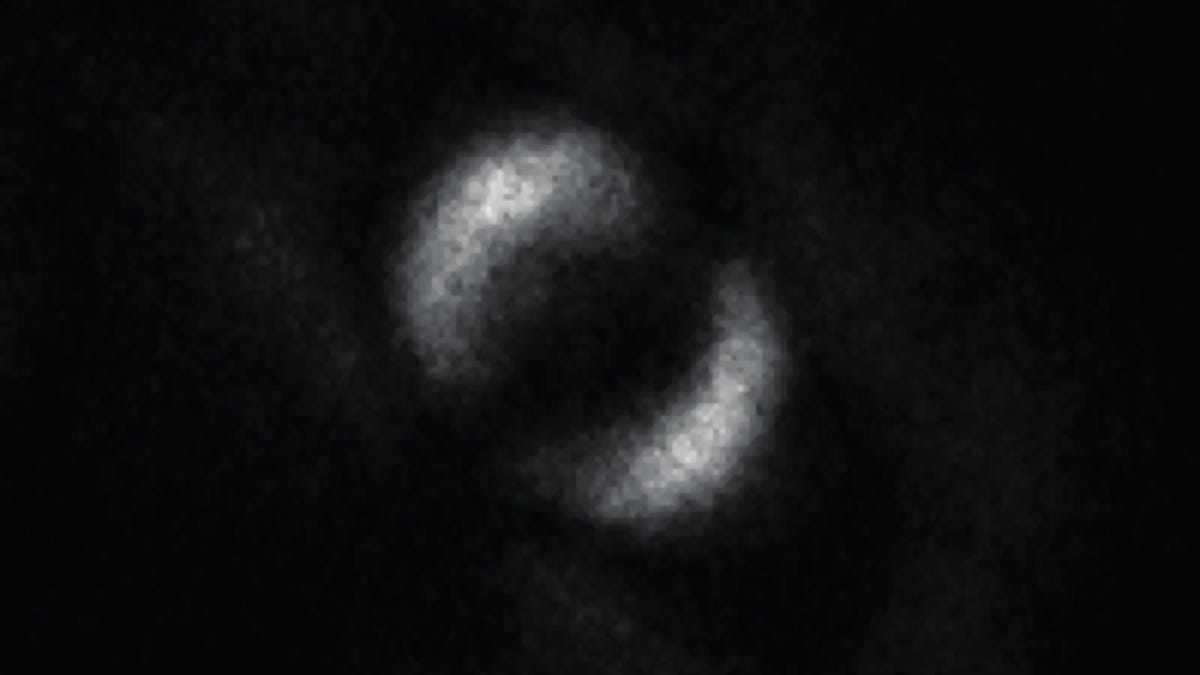Einstein called it 'spooky action.' Here's an image of it for the first time
Quantum entanglement is one of the weirdest phenomena in all of science, so physicists tried to take a picture of it.

An image of two photons that went on very different journeys, only to remain entangled.
If you're sitting on a beach in Florida and your bestie is stung by a bee on a mountain in Colorado, our intuitive understanding of the physical world tells us you can't feel your friend's unfortunate apian encounter. But in the realm of quantum mechanics, a close pair can be split and separated by a significant distance and still remain "entangled" in such a weird way that Einstein himself called it "spooky."
And now for the first time, physicists have been able to capture this bizarre quantum phenomenon, called "Bell entanglement," in a photograph.
In the world we experience, you and your friend might go your separate ways and have different adventures for the summer. Only when you reconnect to share what you've been up to are you again "entangled."
But on the quantum level of particles, a pair of photons can be shot out of a laser together, only to be separated by a beam splitter and sent on very different journeys. But when researchers then observe the separated photons, they behave as if they are still connected.
Physicists at the University of Glasgow set up a complicated experiment to capture in a single image what Einstein called "spooky action at a distance." A pair of photons were shot from a laser, split and sent on very different journeys before being captured by a special camera. The resulting image consistently showed what looks like a pair of photons mirroring each other to form a ring shape.
"The image we've managed to capture is an elegant demonstration of a fundamental property of nature, seen for the very first time," explained Dr. Paul-Antoine Moreau of the University of Glasgow's School of Physics and Astronomy, in a release. Moreau is also lead author of a paper on the process published Friday in Science Advances.
To better understand the process, imagine you and a friend go down two separate water slides at the same time. Your friend's slide is straight and narrow and he goes down feet first the whole way. Your slide, on the other hand, is a wide, swirling affair that rotates you completely so that you wind up hitting the pool at the bottom head first. Yet, somehow, when a camera at the bottom takes a photo of the two of you hitting the pool simultaneously, you're both oriented in the exact same sitting position as when you first began your journeys.
Spooky indeed. And now this spookiness has been made visible to the eye for the first time. In a way, it's interesting that an image like this wasn't produced sooner, because Bell entanglement is already used in practical applications like quantum computing and cryptography.
"It's an exciting result, which could be used to advance the emerging field of quantum computing and lead to new types of imaging," added Moreau.
Perhaps we'll soon be living in a world of quantum images where what you see in a photo is determined not by the photographer, but by the viewer. Someone call Netflix and Charlie Brooker and tell them I've got an idea for the sequel to Bandersnatch.

